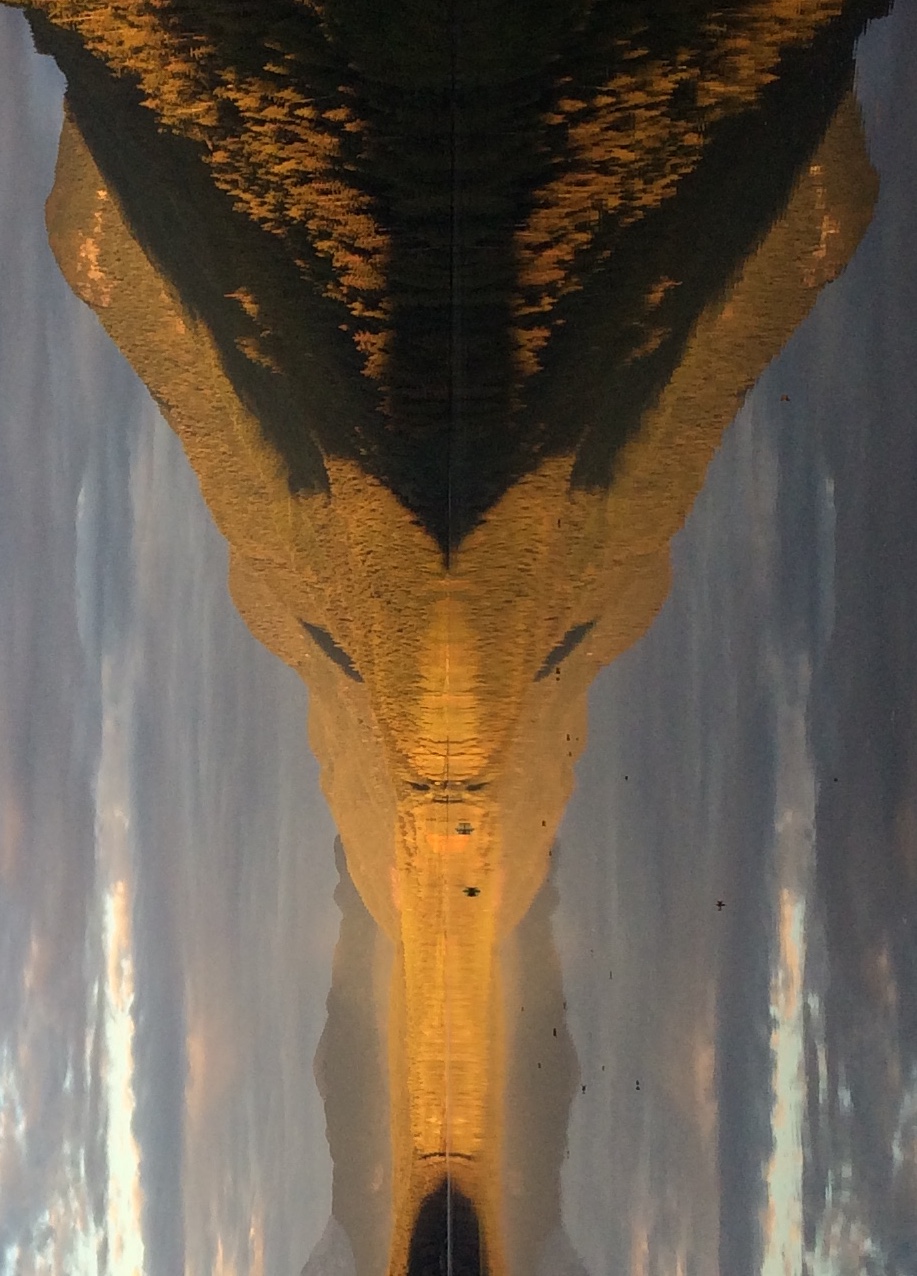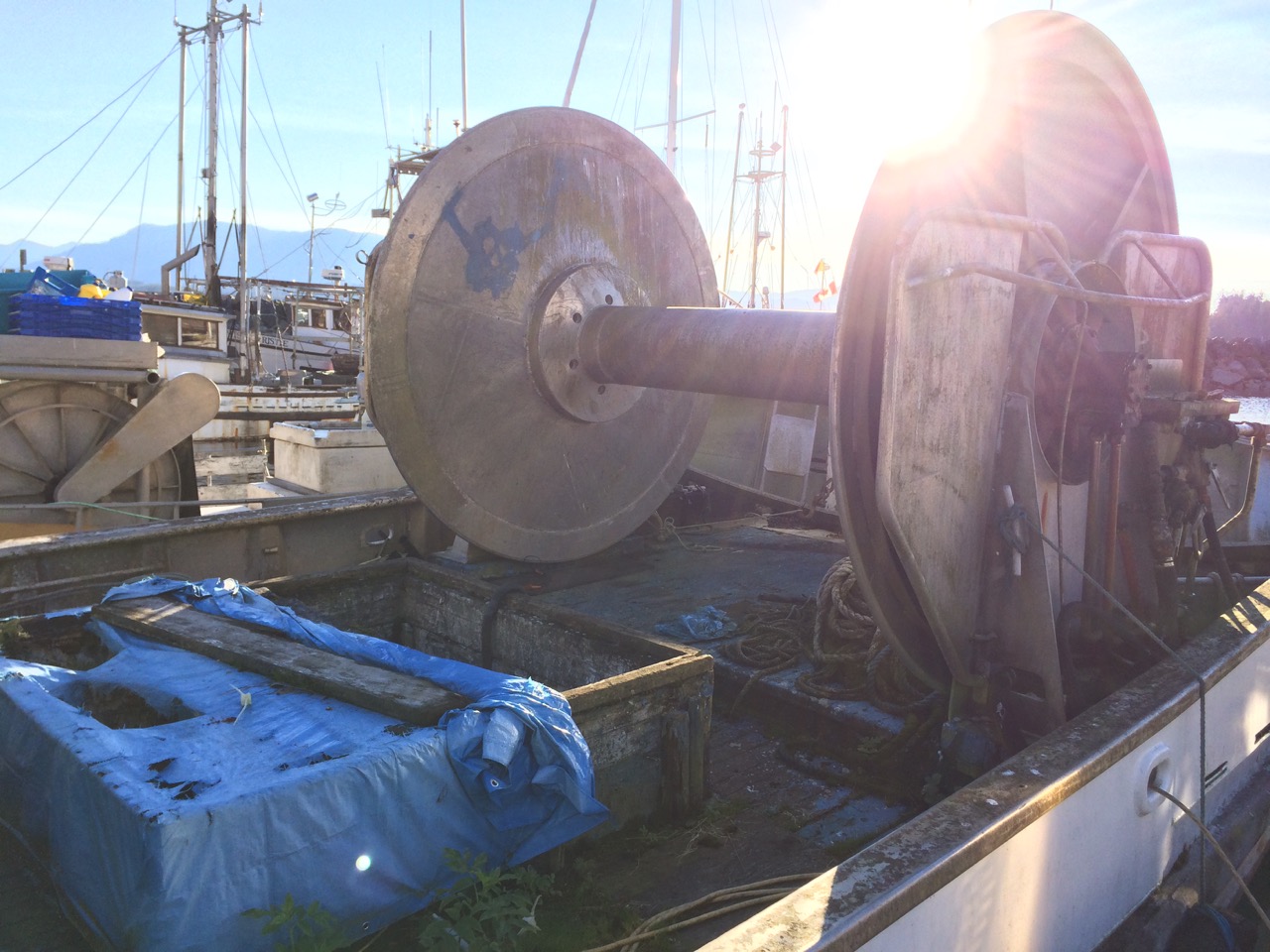 Sunset last night
Sunset last night
Starter Motor Problems
If you’re not likely to get excited by Starter motors or Rust, you can skip this post altogether as it’s really dull
A couple of times in the last week the starter motor failed to start the engine. The Starter motor whirred away very fast, but wasn’t connecting to the engine, so the engine couldn’t start.
The bible on such matters, Nigel Calder’s maintenance book suggested tapping it with a hammer, I had already tried this without any luck, but he wisely suggested to do it while the starter was turning. This worked on two occasions, but today it had no effect.
Being anchored in a very quiet deserted calm bay, with no phone signal, no harbours within 20 miles we were basically stuffed, the only option being to put out a pan pan on the VHF and hope one of the passing boats 15 miles away in the Johnstone Strait would hear. I could just make out the weather forecast on the VHF and they were predicting a gale for later in the day so I had hoped to be at our next port before then.
So it was that I started the task of extracting the starter motor from the engine. Mr Calder had explained the principle of the spiral grove that the cog runs along so that centrifugal force causes it to engage, and that I probably just needed to clean that up and all would be ok.
I took a photo of the wiring, so I could put it all back together, removed the connections, and unbolted the three bolts holding it in. Of course it wouldn’t come out, I tapped it with the hammer, tried to rotate it, but all to no avail. Back to Mr Calders book, and sure enough he says if it won’t come out, give it a ‘smart tap with a hammer to free it’. Obviously I must have been doing ‘dumb taps’. So I returned with the hammer and gave it the smartest tap I could muster and sure enough it moved a little and I could easily yank it out. At this point I could see a trail of dried saltwater/rust all the way from the salt water cooling pump down to area around the starter. I had not been able to see this from other angles, but assumed it was related to the small leak I had spotted on the front of the pump the other day. Minor, but I planned to fix this when I do the engine service next week.
Next my favourite part, stripping it down. I love taking mechanical things apart, but usually this is only when they are disposable, as I can rarely put them back together properly. This time I was careful to mark what went where and to take pictures where there might be doubt / memory loss later.
Looking at the motor it was clear what the book said about rust being the problem. The engaging mechanism, I think this might be called the Bendix, was quite rusty, as was the whole area that sat under the engines big cog (Flywheel?). Mr Calder explains that sea water in the bilge under the engine can splash up and the flywheel can squirt it all around and in particular into the starter motor. More on this later.






I was able to take it all apart quite easily, clean it up, and with a combination of WD40, oil then grease, have the cogs that had initially seemed almost seized, to be whizzing around now with no problem.
It only took 3 attempts to reassemble, just because bolts can all look the same doesn’t actually mean they are!
I was feeling quite confident the job was done, next I had to fit the starter back into the engine, lots of jiggling and it eventually was back bolted to the engine, now the big problem was what to do with the wires. Looking at the photo didn’t help, it didn’t cover the area I needed. There where two studs coming out of the back of the starter that didn’t seem to have wires connected to them, yet I had removed the nuts off them so they must have connections, oh dear. Lots of staring at them, reading manuals and checking in the bible didn’t enlighten me, so I connected the wires I was sure about, i.e. the big red ones that go to the solenoid, and tried the starter.
Voila, the engine spun into life, I shut it down, and then I realised there was a sound of trickling water, as if the tap had been left on, Kathy could hear it as well from the other end of the cabin. Looking into the engine, water was trickling from under the water pump and down the side of the engine. So now I knew the cause of the starter motor rust problem, and felt happier, but what was wrong with the pump?
The Water Pump.
This guy pumps sea water around the heat exchanger which cools the fresh water pumped around the engine, and he was leaking a lot.
I decided to leave it until we reached another port where I could get to help if needed, I figured it had been leaking for a few days, the engine was staying cool, so we could continue.
Once we arrived in Alert Bay, with wifi and shops/ferry to a big town, I had a go at repairing the pump. As always there’s always one fastener that won’t budge, and it was a big bolt that had previously had its head rounded off. It took me an hour to get this out, then I found I didn’t have a spare so had to fabricate one from some studding.
 The pump cleaned up ok, but it took a while to find the correct pump in the workshop manual as there are two different types used depending on age.
The pump cleaned up ok, but it took a while to find the correct pump in the workshop manual as there are two different types used depending on age. Further inspection revealed that I didn’t have any spares, even though I couldn’t see any wear on the rubber o-ring that was in there, and the diagram didn’t show any other seals. I filled the chamber with water and nothing dripped out. I wondered if perhaps the pipes feeding/taking water to the pump were leaking at the join and the water being squirted to the back of the pump. Unlikely, but it was my only hope for a quick repair.
Further inspection revealed that I didn’t have any spares, even though I couldn’t see any wear on the rubber o-ring that was in there, and the diagram didn’t show any other seals. I filled the chamber with water and nothing dripped out. I wondered if perhaps the pipes feeding/taking water to the pump were leaking at the join and the water being squirted to the back of the pump. Unlikely, but it was my only hope for a quick repair.
Before refitting the pump I tried to clear up the areas the salty sea had been spraying. Cleaning the hose that feeds water into the transmission oil cooler saw water squirting out, closer inspection revealed a hole in the cooler, caused I expect by the leak above.

For now I have put some tape over the hole, I’m going to have to replace the cooler at some point soon.
Once it was cleaned and re-assembled I started her up. Usually it takes a while to prime, but this time the water was flowing rapidly out to the exhaust, however it was still running out of the back of the pump as well.
I’m going to have to take the next trip to Sointula, our final destination this year, carefully. When I return in April next year I shall bring a new pump and cooler.
I may need to start thinking about a new engine, but that’s a pricey game I don’t want just yet.
Alert Bay is a fascinating place with a great First Nation Cultural centre, More on that in another post. The town is old and the harbours have some very interesting boats, and a lot of very sad neglected ones too.







Paul Collister
